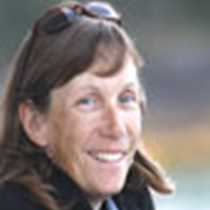Astoria, Oregon and Fort Clatsop
Today we visited the historic town of Astoria, Oregon. Settled in the early 1800's, it provided us with many sites to see. Our first stop was the Columbia River Maritime Museum. Here we marveled at the stories of this place where the Columbia River meets the sea. The entry into the mouth of the Columbia River with its ever-shifting bar of underwater sands is so challenging that it has the well-earned name of Graveyard of the Pacific. To go with this challenge, sailors have fought back. Today there is still an expert group of bar pilots that go meet ships in sometimes treacherous seas to guide them safely over the bar. In times when rescue is needed, there is another group of experts from the Coast Guard that perform daring rescues in a boat that is built to withstand being tipped over by the ocean, and then right itself.
After the museum, we took a short drive across Young's Bay to Fort Clatsop National Memorial, the home of Lewis and Clark in the winter of 1805-1806. Seeing the replica of the fort gave us even more respect for the Corps of Discovery. With only 12 days without rain in the winter that they spent here, the tiny, dark fort did not strike us as a cozy winter home. The other impressive feature at the fort, was the size of the trees. Even though these forests had been cut down by settlers 150 years ago, the spruce trees were already huge. It gave us a new appreciation for the majestic original old growth forests and the ones still preserved in the Pacific Northwest today.
To wrap up our day near the mouth of the river, we left the dock and headed to sea. Well, not all the way to sea, but the Captain took us out toward the mouth of the Columbia River to where we could see the ocean, and feel its swells. Out where the brown pelicans flew low over the water and we could imagine going out to sea with them. Our final vista on the rolling waves was a parting rain shower that treated us to a double rainbow as we turned and headed to Portland.
Today we visited the historic town of Astoria, Oregon. Settled in the early 1800's, it provided us with many sites to see. Our first stop was the Columbia River Maritime Museum. Here we marveled at the stories of this place where the Columbia River meets the sea. The entry into the mouth of the Columbia River with its ever-shifting bar of underwater sands is so challenging that it has the well-earned name of Graveyard of the Pacific. To go with this challenge, sailors have fought back. Today there is still an expert group of bar pilots that go meet ships in sometimes treacherous seas to guide them safely over the bar. In times when rescue is needed, there is another group of experts from the Coast Guard that perform daring rescues in a boat that is built to withstand being tipped over by the ocean, and then right itself.
After the museum, we took a short drive across Young's Bay to Fort Clatsop National Memorial, the home of Lewis and Clark in the winter of 1805-1806. Seeing the replica of the fort gave us even more respect for the Corps of Discovery. With only 12 days without rain in the winter that they spent here, the tiny, dark fort did not strike us as a cozy winter home. The other impressive feature at the fort, was the size of the trees. Even though these forests had been cut down by settlers 150 years ago, the spruce trees were already huge. It gave us a new appreciation for the majestic original old growth forests and the ones still preserved in the Pacific Northwest today.
To wrap up our day near the mouth of the river, we left the dock and headed to sea. Well, not all the way to sea, but the Captain took us out toward the mouth of the Columbia River to where we could see the ocean, and feel its swells. Out where the brown pelicans flew low over the water and we could imagine going out to sea with them. Our final vista on the rolling waves was a parting rain shower that treated us to a double rainbow as we turned and headed to Portland.




